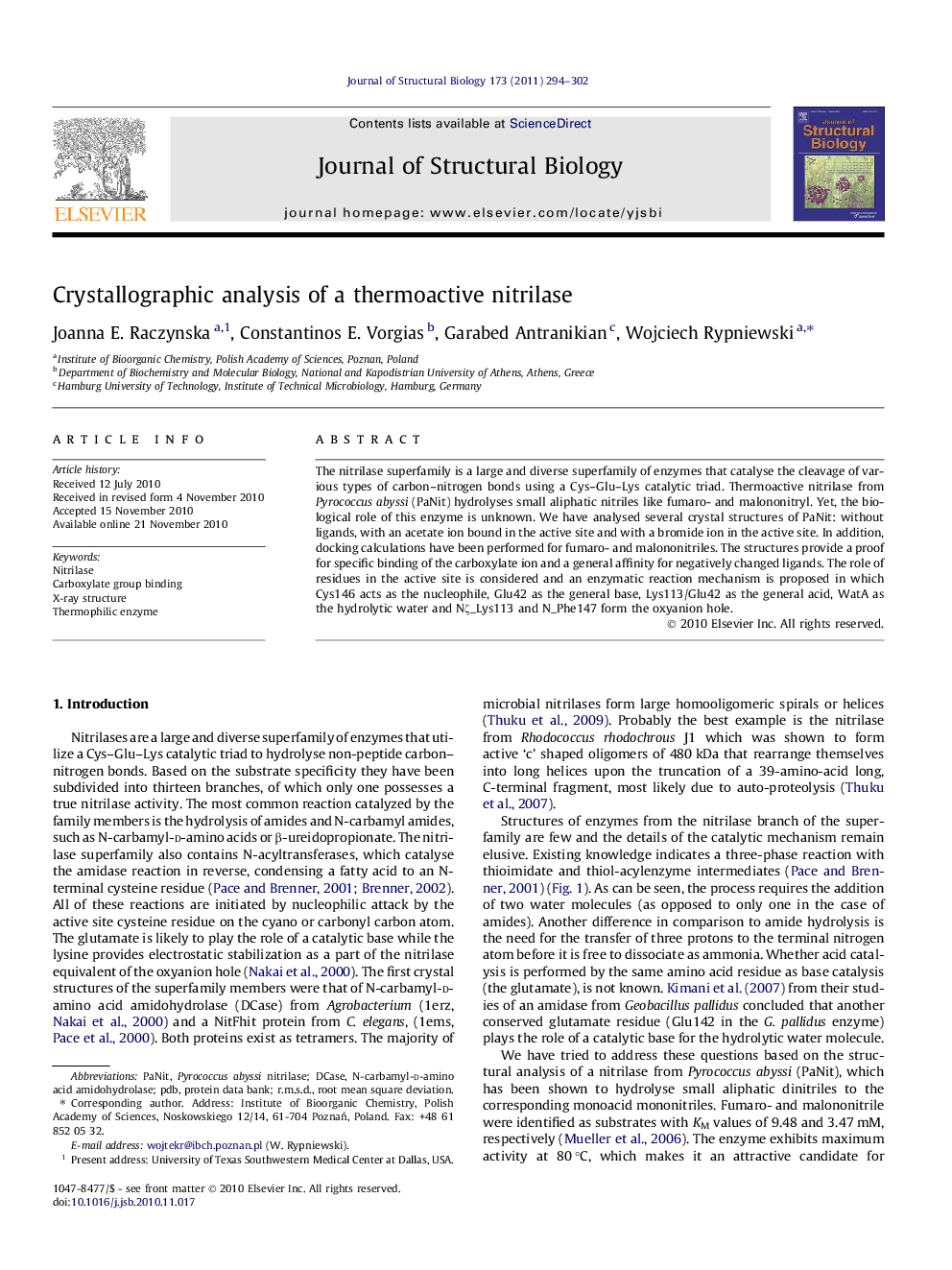| Article ID | Journal | Published Year | Pages | File Type |
|---|---|---|---|---|
| 2828712 | Journal of Structural Biology | 2011 | 9 Pages |
The nitrilase superfamily is a large and diverse superfamily of enzymes that catalyse the cleavage of various types of carbon–nitrogen bonds using a Cys–Glu–Lys catalytic triad. Thermoactive nitrilase from Pyrococcus abyssi (PaNit) hydrolyses small aliphatic nitriles like fumaro- and malononitryl. Yet, the biological role of this enzyme is unknown. We have analysed several crystal structures of PaNit: without ligands, with an acetate ion bound in the active site and with a bromide ion in the active site. In addition, docking calculations have been performed for fumaro- and malononitriles. The structures provide a proof for specific binding of the carboxylate ion and a general affinity for negatively changed ligands. The role of residues in the active site is considered and an enzymatic reaction mechanism is proposed in which Cys146 acts as the nucleophile, Glu42 as the general base, Lys113/Glu42 as the general acid, WatA as the hydrolytic water and Nζ_Lys113 and N_Phe147 form the oxyanion hole.
